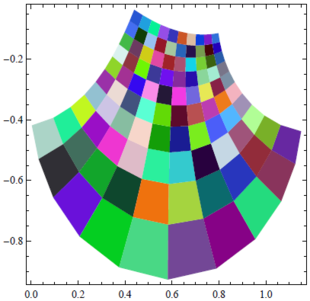|
|
| Line 36: |
Line 36: |
|
|
|
|
|
|
|
|
|
(2) Let <math>V=\{(a_1, a_2):a_1, a_2 \in R\}</math>. Then <math>\forall (a_1, a_2), (b_1, b_2) \in V, \forall c \in R</math>, define <math>(a_1, a_2) + (b_1, b_2) = (a_1 + 2b_1, a_2 + 3b_2)</math> and <math>c(a_1, a_2)=(ca_1, ca_2)</math>. We show that <math>V</math> is not a vector |
|
(2) Let <math>V=\{(a_1, a_2):a_1, a_2 \in R\}</math>. Then <math>\forall (a_1, a_2), (b_1, b_2) \in V, \forall c \in R</math>, define |
|
|
|
|
|
<math>(a_1, a_2) + (b_1, b_2) = (a_1 + 2b_1, a_2 + 3b_2)</math> and <math>c(a_1, a_2)=(ca_1, ca_2)</math>. We show that <math>V</math> is not a vector |
|
|
|
|
|
space over <math>R</math>. |
|
space over <math>R</math>. |
Revision as of 00:39, 12 October 2014
Welcome to Math 240!
(additions to this web site no longer count towards good deed points)
|
| #
|
Week of...
|
Notes and Links
|
| 1
|
Sep 8
|
About This Class, What is this class about? (PDF, HTML), Monday, Wednesday
|
| 2
|
Sep 15
|
HW1, Monday, Wednesday, TheComplexField.pdf,HW1_solutions.pdf
|
| 3
|
Sep 22
|
HW2, Class Photo, Monday, Wednesday, HW2_solutions.pdf
|
| 4
|
Sep 29
|
HW3, Wednesday, Tutorial, HW3_solutions.pdf
|
| 5
|
Oct 6
|
HW4, Monday, Wednesday, Tutorial, HW4_solutions.pdf
|
| 6
|
Oct 13
|
No Monday class (Thanksgiving), Wednesday, Tutorial
|
| 7
|
Oct 20
|
HW5, Term Test at tutorials on Tuesday, Wednesday
|
| 8
|
Oct 27
|
HW6, Monday, Why LinAlg?, Wednesday, Tutorial
|
| 9
|
Nov 3
|
Monday is the last day to drop this class, HW7, Monday, Wednesday, Tutorial
|
| 10
|
Nov 10
|
HW8, Monday, Tutorial
|
| 11
|
Nov 17
|
Monday-Tuesday is UofT November break
|
| 12
|
Nov 24
|
HW9
|
| 13
|
Dec 1
|
Wednesday is a "makeup Monday"! End-of-Course Schedule, Tutorial
|
| F
|
Dec 8
|
The Final Exam
|
| Register of Good Deeds
|

Add your name / see who's in!
|

|
|
Boris
Subtle Problems in Proofs
Check out these proofs:
(1) Let  ,
,  be subspaces of a vector space
be subspaces of a vector space  . We show that
. We show that  is a subspace
is a subspace
 .
.
- Assume that
 is a subspace.
is a subspace.
- Let
 .
.
- Then
 and
and  .
.
- Then
 .
.
- Case 1:
 :
:
- Since
 and
and  has additive inverses, then
has additive inverses, then  .
.
- Then
 .
.
- Case 2:
 :
:
- Since
 and
and  has additive inverses, then
has additive inverses, then  .
.
- Then
 .
.
- Then
 .
.
- Then
 . Q.E.D.
. Q.E.D.
(2) Let  . Then
. Then  , define
, define
 and
and  . We show that
. We show that  is not a vector
is not a vector
space over  .
.
Nikita

























